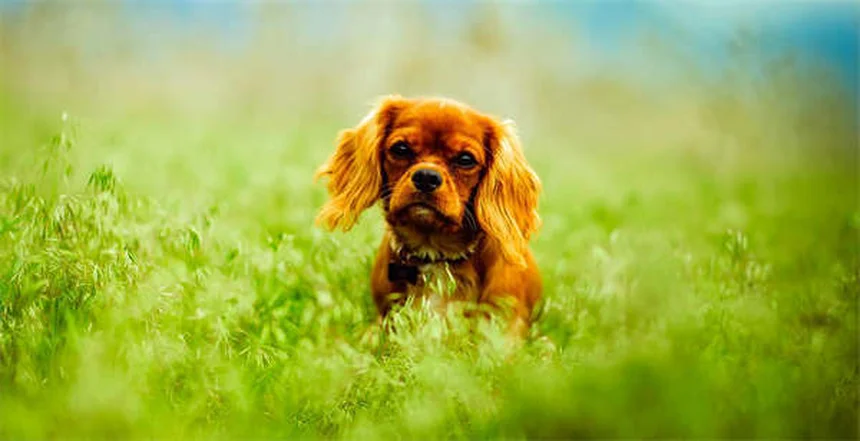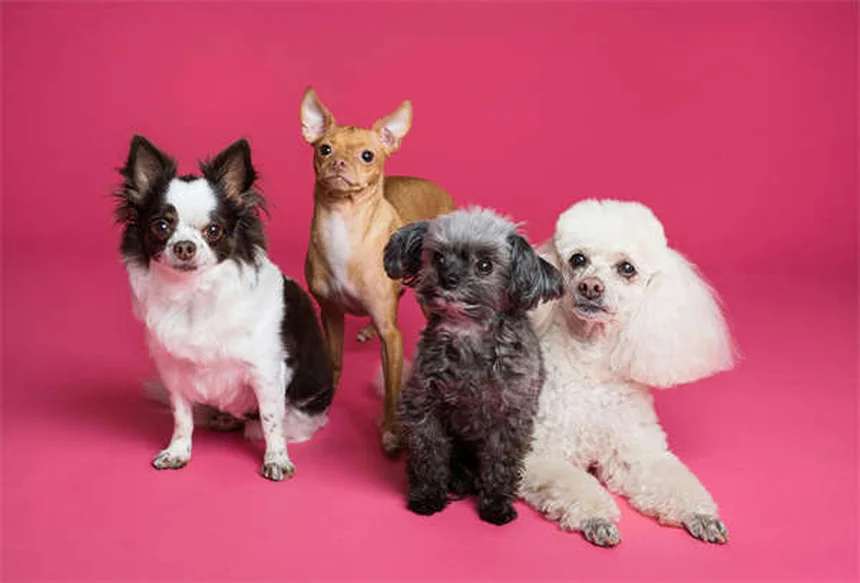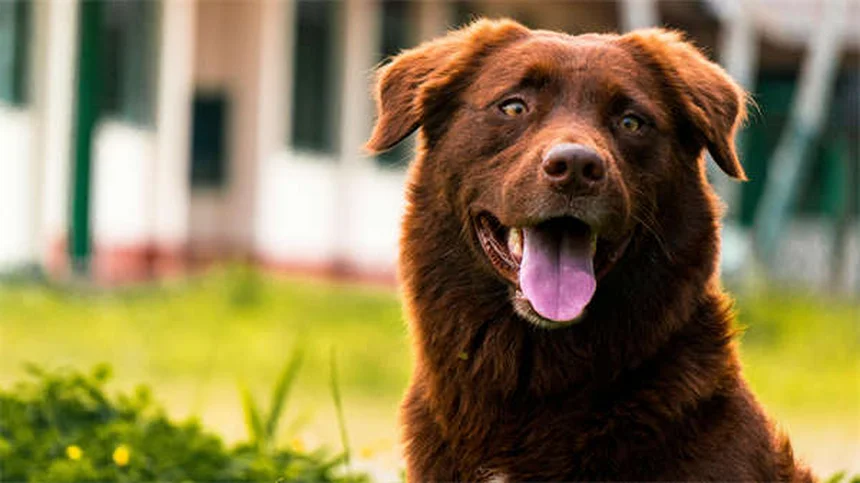Gerbils with Rough Hair: Causes & Simple Fixes
Why does my gerbil have rough hair? The answer is simple: your furry friend's scruffy coat is trying to tell you something's wrong! Whether it's due to health issues or environmental factors, that rough fur is never just cosmetic. From my 10 years working with small pets, I can tell you rough hair in gerbils usually stems from three main causes: health problems, poor cage conditions, or nutritional deficiencies. The good news? Most cases are fixable once you identify the root cause. In this guide, we'll break down exactly what to look for and how to get your gerbil's coat back to its soft, healthy self. Trust me, your little buddy will thank you!
E.g. :5 Best Saltwater Sharks for Home Aquariums (Expert Guide)
- 1、Why Does My Gerbil Have Rough Hair?
- 2、The Usual Suspects: What Causes Rough Hair?
- 3、Playing Detective: How Vets Figure It Out
- 4、Fixing the Problem: Treatment Options
- 5、Home Makeover: Creating the Perfect Gerbil Pad
- 6、Keeping That Coat Smooth: Prevention Tips
- 7、Your Burning Questions Answered
- 8、Beyond the Basics: More About Gerbil Care
- 9、Common Misconceptions About Gerbil Health
- 10、Fun Facts to Impress Your Friends
- 11、When to Worry (And When Not To)
- 12、Creating the Ultimate Gerbil Paradise
- 13、FAQs
Why Does My Gerbil Have Rough Hair?
Ever noticed your gerbil's fur looking more like a bad hair day than its usual sleek self? Rough hair coat isn't a disease itself, but it's like a flashing neon sign saying "Hey, something's not right here!" Let's dive into what causes this and how we can help our little furry friends.
It's Not Just About Looks
That scruffy fur is often the first clue something's off. Think of it like when you wake up with crazy bedhead - except for gerbils, it might mean:
- Skin looking dull and lifeless
- Patches of rough, tangled fur
- Flaky skin (like bad dandruff)
- Occasional redness or irritation
The Usual Suspects: What Causes Rough Hair?
Health Issues Behind the Scenes
Imagine your gerbil's body is like a well-oiled machine. When one part isn't working right, the whole system shows it. Common culprits include:
| Cause | How It Affects Fur | Example |
|---|---|---|
| Infections | Body focuses energy on fighting illness | Like when you're sick and your hair looks greasy |
| Parasites | Constant irritation and scratching | Imagine fleas making you itch all day |
| Nutrition Problems | Missing key vitamins for fur growth | Similar to your hair breaking if you don't eat protein |
 Photos provided by pixabay
Photos provided by pixabay
When Home Isn't Comfy Enough
Did you know your gerbil's tank setup could be the main problem? Here's the scoop:
Humidity is public enemy #1. These desert-dwellers need dry air - anything above 50% humidity turns their fur into a tangled mess. It's like trying to style your hair in a steam room!
Poor ventilation is another biggie. Would you want to live in a stuffy closet? Neither does your gerbil. Tanks without good airflow create the perfect storm for rough fur.
Playing Detective: How Vets Figure It Out
The Clue-Gathering Phase
When you visit the vet, they'll want to know:
"What changed before the rough fur appeared?" Maybe you switched foods, cleaned the cage differently, or noticed your gerbil scratching more. These details help narrow down the possibilities.
The Science Part
Sometimes looking isn't enough. Your vet might need to:
- Check blood work (like a gerbil physical)
- Examine skin scrapings under a microscope
- Test hair samples
Think of it like when a mechanic hooks your car up to diagnostics - same idea, just much smaller patients!
Fixing the Problem: Treatment Options
 Photos provided by pixabay
Photos provided by pixabay
When Home Isn't Comfy Enough
If your gerbil is uncomfortable, vets might use:
Antihistamines for itching (like Benadryl for rodents) or corticosteroids to reduce inflammation. It's giving them that "ahhh" feeling after scratching a mosquito bite.
Targeting the Root Cause
Here's where treatments get specific:
For parasites? Dewormers that kick those freeloaders out. Bacterial infections? Carefully measured antibiotics (because too much can be dangerous for tiny bodies). Nutritional issues? Special supplements to get that coat shiny again.
Home Makeover: Creating the Perfect Gerbil Pad
The Great Clean-Out
If parasites or infections are involved, you'll need to:
1. Toss all old bedding (think of it as evicting unwanted guests)
2. Scrub every inch of the cage
3. Replace any toys that can't be fully sanitized
 Photos provided by pixabay
Photos provided by pixabay
When Home Isn't Comfy Enough
Remember our humidity talk? Here's how to nail it:
Keep the room between 20-24°C (68-75°F) with humidity below 50%. A simple hygrometer from the pet store can help you monitor this. Good ventilation is crucial - if your tank smells funky, your gerbil's breathing it too!
Keeping That Coat Smooth: Prevention Tips
Regular Check-Ups Matter
Did you know gerbils are masters at hiding illness? That's why regular vet visits are crucial - they spot problems before the rough fur even appears.
Diet Makes All the Difference
Feed a balanced commercial gerbil food supplemented with:
- Fresh veggies (in small amounts)
- Occasional protein like mealworms
- Always fresh water
Stress Less
Gerbils are sensitive souls. Loud noises, frequent handling, or cage mates fighting can all lead to - you guessed it - rough fur. Keep their environment calm and consistent.
Your Burning Questions Answered
Can rough fur be serious?
You bet! While sometimes it's just environmental, it can signal serious health issues. That's why it's never "just" about the fur - there's always an underlying reason.
How fast will treatment work?
Patience is key. You might see improvement in a few days for simple causes, but full recovery can take weeks. The fur needs time to grow back healthy!
Remember, your gerbil depends on you to notice these changes. With proper care and attention, that rough coat will be back to silky smooth in no time!
Beyond the Basics: More About Gerbil Care
The Social Life of Gerbils
Did you know gerbils are incredibly social creatures? In the wild, they live in large family groups. When we keep them as pets, this social need doesn't disappear.
Pairing gerbils properly is an art form. Introduce them wrong, and you'll have World War III in a tiny cage. The best approach? Get siblings from the same litter, or follow the "split cage method" where they can smell but not touch each other at first. I've seen too many well-meaning owners rush this process and end up with stressed, fur-pulling gerbils.
Exercise Needs You Might Not Know About
Ever watched a gerbil run on its wheel at 3 AM? These little guys have energy to burn!
A proper setup includes more than just a wheel though. Digging boxes filled with safe bedding material satisfy their natural burrowing instincts. I recommend at least 6 inches of bedding in part of their enclosure - watching them create elaborate tunnel systems is half the fun of owning gerbils!
Common Misconceptions About Gerbil Health
"They're Just Like Hamsters"
This thinking gets gerbils in trouble all the time. While they're both small rodents, their care differs significantly.
| Aspect | Gerbils | Hamsters |
|---|---|---|
| Social Needs | Thrive in pairs/groups | Mostly solitary |
| Activity Pattern | Mostly diurnal | Nocturnal |
| Water Needs | Require less (desert adapted) | Need more frequent water |
See the difference? Treating a gerbil like a hamster could lead to stress and - you guessed it - rough fur problems.
"They Don't Need Vet Care"
Here's a question that might surprise you: Why would a $5 pet need $100 vet visits? The answer's simple - because they're living creatures deserving proper care.
Exotic vets see gerbils for everything from dental issues (their teeth never stop growing!) to respiratory infections. Regular check-ups can catch problems early, saving you money and heartache in the long run. I've seen too many "sudden" gerbil deaths that weren't sudden at all - just unnoticed by untrained eyes.
Fun Facts to Impress Your Friends
Gerbil Superpowers
These little guys have some amazing adaptations:
Their kidneys are so efficient they can survive on just drops of water - perfect for desert life. They also have a special membrane in their ears that lets them close them completely during sandstorms. How cool is that?
And get this - gerbils communicate through foot stomping! That cute little thumping you hear? It's their version of texting warnings to each other.
The History of Domestic Gerbils
All pet gerbils today descend from just 40 wild-caught individuals brought to the U.S. in 1954. Talk about a small family tree!
Originally from Mongolia, they were first used in medical research before becoming popular pets. Their gentle nature and clean habits (they rarely smell if cared for properly) made them ideal companions. Now they're one of the most recommended "starter pets" for kids - though I always remind parents that no pet is truly low-maintenance.
When to Worry (And When Not To)
Normal Shedding vs. Problem Fur
Here's another question owners often have: How can I tell if it's just a bad hair phase or something serious?
Normal shedding happens evenly and the new fur comes in soft. Problem fur shows patches, redness, or changes in behavior like excessive scratching. If your gerbil's acting normal otherwise - eating, playing, being their usual curious self - it might just be a temporary coat issue.
But combine rough fur with lethargy, weight loss, or changes in bathroom habits? That's your cue to call the vet ASAP. Better safe than sorry with these little guys - their small size means health issues can escalate quickly.
Seasonal Changes
Just like you might get dry skin in winter, gerbils experience seasonal coat variations. Many owners report slightly rougher fur during seasonal transitions.
The key is knowing your gerbil's normal. Keep a little notebook tracking their appearance and behavior. That way, when something changes, you'll have a baseline for comparison. I can't tell you how many times this simple habit has helped owners spot health issues early!
Creating the Ultimate Gerbil Paradise
Beyond the Basic Cage
Pet stores sell some pretty boring gerbil habitats. Let's think outside the box!
Try connecting multiple enclosures with tubes to create a gerbil highway. Add different textures like smooth stones, untreated wood, and ceramic tiles. Rotate toys weekly to keep things interesting. Your gerbils will thank you with bright eyes and glossy coats!
The Importance of Mental Stimulation
Bored gerbils develop all sorts of issues - from overgrooming to cage aggression.
Hide treats in toilet paper tubes stuffed with hay. Create foraging opportunities by scattering some food instead of always using a bowl. Train them to navigate simple obstacle courses using their favorite treats as motivation. A stimulated gerbil is a healthy, happy gerbil - and that shows in their appearance.
Remember, these are intelligent creatures capable of learning tricks and forming strong bonds. The more you engage with them, the more rewarding the relationship becomes for both of you!
E.g. :Rough Hair Coat in Gerbils | PetMD
FAQs
Q: Can rough hair in gerbils be a sign of serious illness?
A: Absolutely! While sometimes it's just from high humidity, that scruffy coat can signal bigger problems. We've seen cases where rough fur was the first visible sign of parasitic infections, nutritional deficiencies, or even systemic diseases. That's why it's crucial to get your gerbil checked by an exotic pet vet if the rough coat persists more than a few days or comes with other symptoms like scratching or lethargy. Early detection makes all the difference in treatment success.
Q: How can I tell if my gerbil's rough hair is from humidity or health issues?
A: Here's a pro tip we use: health-related rough fur usually appears patchy and comes with other symptoms like scratching or weight loss. Humidity-related issues? That gives an all-over "bad hair day" look. Try this simple test - if improving cage ventilation and lowering humidity below 50% doesn't help within a week, it's likely a health problem. Either way, we recommend a vet visit to be safe.
Q: What's the fastest way to improve my gerbil's rough coat?
A: From our experience, start with these three steps immediately: 1) Deep clean the cage with pet-safe disinfectant, 2) Replace all bedding with fresh material, and 3) Add a vitamin supplement to their water. These simple changes often show improvement within 3-5 days. But remember - this is just first aid. For lasting results, you'll need to address the underlying cause, whether it's adjusting humidity, treating parasites, or improving diet.
Q: Are some gerbil breeds more prone to rough hair than others?
A: Great question! While all gerbils can develop rough coats, we've noticed certain color mutations (like black or white gerbils) tend to show coat problems sooner when something's wrong. Their fur seems more sensitive to environmental changes. But here's the important part - no gerbil should regularly have rough fur. If you notice it becoming a chronic issue, that's a red flag something in their care needs adjustment.
Q: How often should I check my gerbil's coat for problems?
A: We recommend doing a quick "fur check" during weekly cage cleanings. Run your fingers gently against the fur growth - healthy coats feel uniformly smooth. Pay special attention to the rump area, where problems often show first. Catching changes early means simpler solutions and less discomfort for your pet. Think of it like checking your car's oil - regular maintenance prevents bigger problems down the road!






